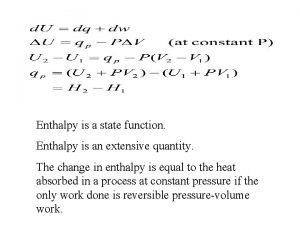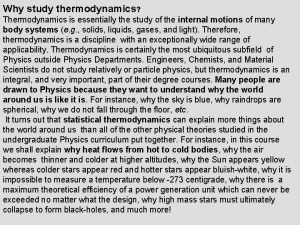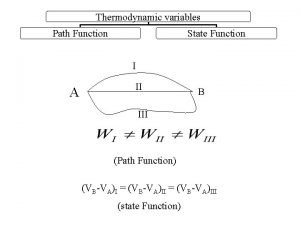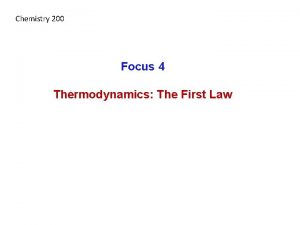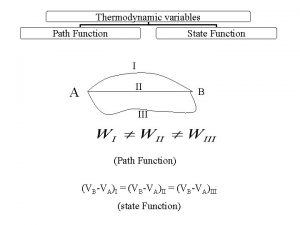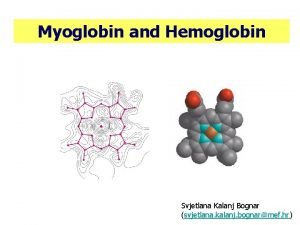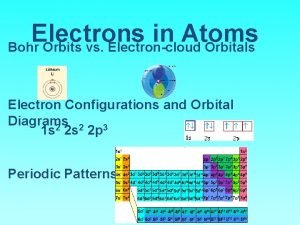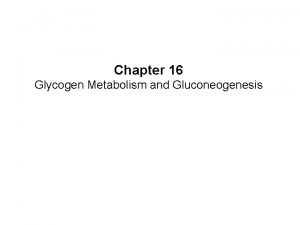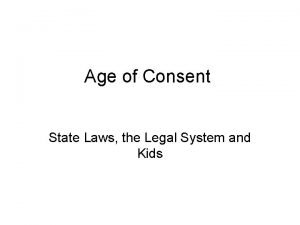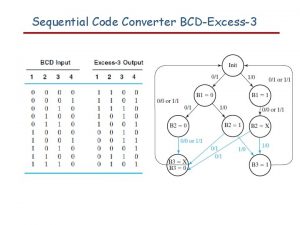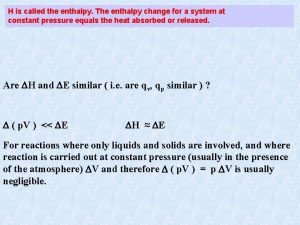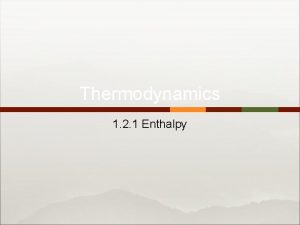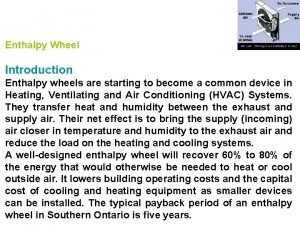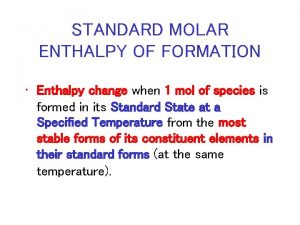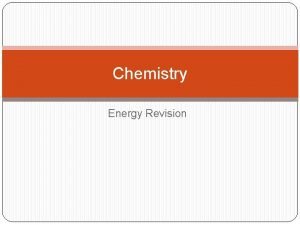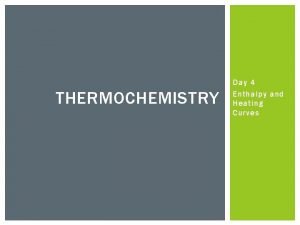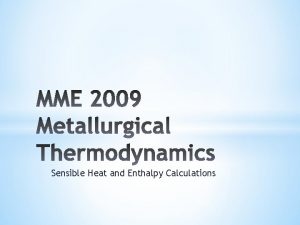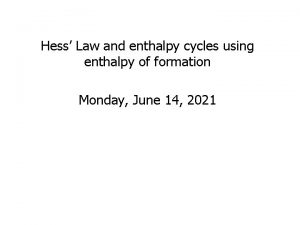Enthalpy is a state function Enthalpy is an




















- Slides: 20

Enthalpy is a state function. Enthalpy is an extensive quantity. The change in enthalpy is equal to the heat absorbed in a process at constant pressure if the only work done is reversible pressure-volume work.

Work done in an Isothermal Expansion/compression of an ideal gas. (a) Free expansion (b) pex=0, w=0 (b) Expansion against constant pressure (Expansion of a gas formed in a chemical reaction) w =P 2(V 2 -V 1) © Reversible isothermal Expansion/contr

Internal Energy Change in an Isothermal Expansion/compression of an ideal Gas

Thermodynamics changes in an adiabatic process of an ideal gas.


Thermodynamic changes for a real gas (a) Free expansion (b) pex=0, w=0 (b) Expansion against constant pressure w =P 2(V 2 -V 1) © Reversible isothermal Expansion/contr

Internal energy change in an isothermal process for a real gas.

Unfamiliar Quantities that can be recognized, interpreted, or measured.

Change of volume with temperature. EXPANSION COEFFICIENT ( ) Thermal expansion is also used in mechanical applications to fit parts over one another. There exist some alloys with a very small CTE, used in applications that demand very small changes in physical dimension over a range of temperatures. One of these is invar 36, with a coefficient in the 0. 0000016 range. These alloys are useful in aerospace applications where wide temperature swings may occur.

Change of volume with Pressure ISOTHERMAL COMPRESSIBILITY ( T) Oxygen compresses more than helium. Therefore, if two cylinders with the same internal volume are filled to the same pressure, one with oxygen and the other with helium, the oxygen cylinder will hold more cubic feet of gas than the helium cylinder. Change of pressure with Temperature

Change of internal energy with Volume Test of a state Function (e. g. p=f(V, T)


Internal energy change in an isothermal process for a real gas.

Internal energy change in an adiabatic process for a real gas.

Enthalpy changes in a thermodynamic Processes.

Changes in Internal energy with temperature at constant pressure

Changes in enthalpy with temperature at constant volume.


Relation between Cp and CV

 Is enthalpy a state function
Is enthalpy a state function Why study thermodynamics
Why study thermodynamics Pressure is state function or path function
Pressure is state function or path function Pressure is state function or path function
Pressure is state function or path function State function and path function in thermodynamics
State function and path function in thermodynamics Properties of liquid matter
Properties of liquid matter State to state regionalism
State to state regionalism Excitation table for sr flip flops
Excitation table for sr flip flops Good state and bad state graphs
Good state and bad state graphs Svjetlana kalanj bognar
Svjetlana kalanj bognar Ground state vs excited state
Ground state vs excited state Difference between hemoglobin and myoglobin
Difference between hemoglobin and myoglobin Absorptive state and postabsorptive state
Absorptive state and postabsorptive state Synthesis of glycogen
Synthesis of glycogen Age of consent state by state
Age of consent state by state Salesforce 101: introduction to salesforce kurs
Salesforce 101: introduction to salesforce kurs State diagram to state table converter
State diagram to state table converter New state drink
New state drink State state graphs and transition testing
State state graphs and transition testing What is initial state + goal state in search terminology?
What is initial state + goal state in search terminology? Tasscc state of the state
Tasscc state of the state
